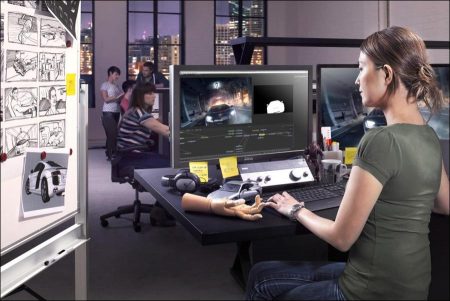In the fifth instalment of Danny Leigh’s series about modern cinema, he examines the shift in film-making brought about by digital. The Dogme 95 movie Festen, made at the tail-end of the 20th century, revealed the unavoidable future. But it still cost over a million dollars to produce.
The real revolution, beyond the liberation offered by digital cameras, was ushered in by Tarnation, which foretold society’s obsessive fascination with self-curation on a budget of $218. On another scale, Alfonso Cuarón’s beautiful and terrifying rendition of the vastness of space, Gravity, was made possible with massive processing power. Back on earth, the great Iranian director Jafar Panahi avoided the gaze of the regime that had banned him by shooting Taxi Tehran on tiny dashboard cameras. Catch up on earlier episodes Sex, Money, Death and Film, below.
Episode 1 / Film
The first episode examines how film itself is referenced in contemporary movies: beginning with Mulholland Drive, David Lynch’s sensuous, distorted dissection of Hollywood and of film itself then continuing with Leos Carax’s Holy Motors, where an actor criss-crosses Paris where each location in his odyssey becomes a strange, anarchic movie. Finally, in Joshua Oppenheimer’s extraordinary documentary The Act of Killing, Danny considers how the director relives the 1965 massacres in Indonesia. Here, the unrepentant gangsters who formed the death squads also happen to love films, so the director convinces them to restage their crimes for a ‘movie’ in order to set the record straight.
Episode 2 / Money
In the second episode, Danny looks at movie portrayals of money – and the people making it. Margin Call, starring Kevin Spacey and Jeremy Irons, takes an insistently authentic look at the rarefied world of investment bankers in 2008, just as Wall Street is about to open up beneath them. In The Wolf of Wall Street, audiences loved Leonardo DiCaprio’s gangster-as-banker Jordan Belfort, who was “at least honest about his dishonesty”, making it Martin Scorsese’s biggest box office success. Spring Breakers features four girls desperate to head to the Florida sun, who land with James Franco’s character Alien, a “svengali, drug dealer, rapper and enthusiastic capitalist”. Is this the good life?
Episode 3 / Sex
The third episode of Film Now takes a look at sex and gender. The Hollywood sex scene’s heyday was rendered obsolete by the internet’s arrival. Away from the mainstream, arthouse auteurs reacted to online porn’s challenge – or perhaps took advantage of it. As well as being explicit, and sometimes brilliant, films like Lars von Trier’s Nymphomaniac were about women as seen by men, and directed by men. But, slowly, women have started to get their visions seen on-screen, and they see women differently – soaringly so in Celine Sciamma’s Paris-set Girlhood. And gender, sexuality and relationships are central to Tangerine, which portrayed trans street culture in Los Angeles and smashed conventions with both its casting choices and filming techniques.
Episode 4 / Death
The fourth episode of Film Now, Danny Leigh’s exploration of modern cinema, takes a look at approaches to death in three key 21st-century films. Directed by Paul Greengrass, United 93 was the tragic story of the only flight of the four hijacked on the morning of September 11th 2001 not to reach its intended target.
Only God Forgives was directed by Nicolas Winding Refn, his follow-up to the much-loved Drive, and again starring Ryan Gosling. This time, the response was what we would politely call divided, to a movie slick with Refn’s stylised bloodshed. And at first glance, David Robert Mitchell’s It Follows looks like that most mundane of things, the American suburban teenage horror movie, with a cast destined to be sliced, diced and forgotten. But it messes with every expectation.
Danny Leigh introduces the series
In film the urge is always to look ahead or behind us. In one direction there’s the giddy rush of new releases, the endless Willy Wonka conveyor belt of colourful forthcoming treats, often better in anticipation than reality. In the other there’s the weight of history, that glorious movie past, a gorgeous panorama of black-and-white filled with Monroe and Brando, Hitchcock and Citizen Kane.
What we do less is look at the moment. So I wanted to dedicate six short videos to the century of cinema so far. The 21st, sixteen years in. As well as enthralling us, movies can be a mirror. On the surface there are headlines, beneath it the stories we tell ourselves on screen, a collective subconscious bubbling up into characters and plots.
So what’s been on our minds, I wondered, in the era that began with a sigh of relief that the Millennium Bug hadn’t snuffed out civilization, and which brought us to right here. Wherever this is.
Some of the videos we’ve made are about film itself – reshaped by the rise of digital technology and filled with thrilling new talents, but still with room for Scorsese, Lynch, Lars von Trier, Kathryn Bigelow.
Most are about the place where it meets the real world. Not film as it was, or might be in the future. But about film and money, love and sex, fear and death, how we see ourselves and each other. In other words: about film now.
Views: 293











